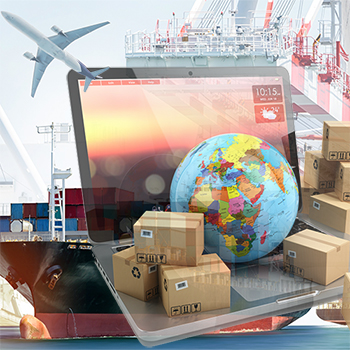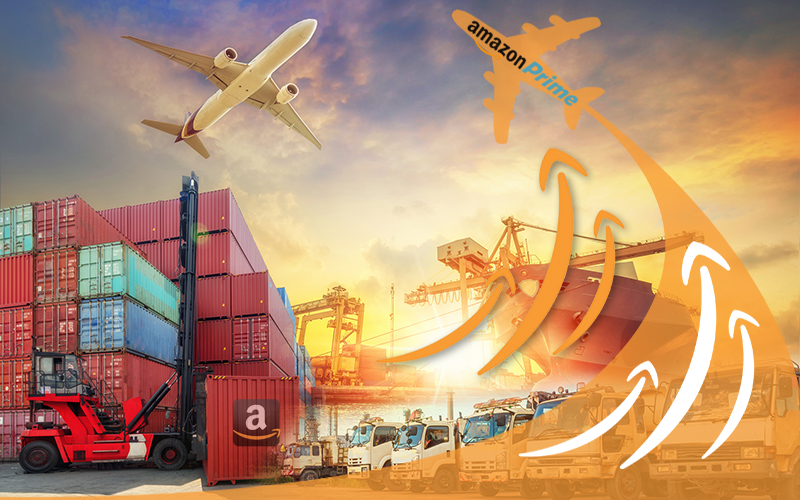Freight Forwarders Face ‘Significant Change from New E-Business Models’

New Drewry report highlights ‘wide and varied threats and opportunities’ as innovative online platforms alter the way companies buy international shipping services.
Freight forwarders face “wide and varied threats and opportunities” from disruptive new e-business models and innovative online platforms, which are gaining market traction and changing the way companies buy and transact international shipping services.
That is one of the many conclusions from a wide-ranging thought-leadership white paper from Drewry Supply Chain Advisors that examines whether freight forwarders are “at a threat of being cast aside by the freight equivalent of Expedia or booking.com”.
The ‘E-Business Disruptions In Global Freight Forwarding’ report also attempts to identify the fundamental changes which are driving e-business in international shipping.
Drewry associate Philippe Salles says no single factor can be identified as being the principal driver behind the trend, but both the nature of the spot rate shipping business and e-commerce logistics have encouraged the development of online forwarding. The paper highlights a number of factors which are contributing to the trend, these include:
Shippers expecting a more agile supply chain to meet today’s more dynamic ‘on demand economy’, with shorter contracts and spot rate requests.
Eroding margins in commoditized and fragmented forwarding services make it harder for 3PLs to increase their sales. However, differentiation and cost optimisation can be achieved through improved online customer experience and automation, especially for medium-size shipper business and spot shipments.
The rapid growth of cross-border e-commerce is pushing change and innovations. And ‘Millennials’ that are more comfortable handling activities in a mobile, instant and network connected way.
He said new entrants “are starting to make an impact and established businesses are either resisting change or adapting”. Among the new business models are:
Online sales platforms; Cloud-based freight forwarders; Large 3PLs adapting to online business; Rate and Data service providers; Transport Management System providers, and others.
The report notes that some large 3PLs adapting to online business are investing in customer portals to gain productivity and reach small shippers and non-recurrent door-door business in a cost effective way − such as Kuehne Nagel’s portal − and investing in e-commerce logistics platforms.
It notes that forwarding “can rapidly go digital in its transactional form, with online sales, instant order and automated process, including cross-docking”.
It also observed that there is certain confidence among logistics decision makers and freight forwarders “about the continuing role of forwarders and 3PLs and some skepticism about new entrants”, and a belief that international freight is not as easy as booking a one-off passenger ticket or hotel.
“True, freight forwarding requires trust, orchestration, troubleshooting and functions like customs and compliance remain sensitive,” the report notes. “But things will change.”
The report concludes: “The spot business and basic port-to-port transport are the natural and easier entry points for e-forwarding. The challenge of instant online capabilities for more complex services may be temporary – watch this space.”
E-Forwarding Ecosystem
Source: Drewry e-business research
The report highlights that the implications of these developments in disruptive new e-business models and innovative online platforms for both current and new entrant freight forwarders are “wide and varied, presenting both threats and opportunities as well as significant change”.
The report lists a series of probable key changes. These include, on the shipper or “business” side:
The small and mid-size shipper, spot shipment and LCL segment will move online extensively through complete web based forwarding services (from instant quote, booking, up to payment) as well as online sales platforms which dynamically push public and customer-specific rates. These platforms may only target and penetrate specific markets where a certain degree of automation can be achieved. Customer profiling and market segmentation will be at the core of the business model of these online sales channels.
Large shippers will have access to more procurement options, benchmarking and insight capabilities, the report notes.
Meanwhile, large exporters and importers will continue to tender their sea-freight (port-to-port or port-to-rail ramp) and land transport, directly with their core carriers and with their forwarders for some part of their volumes. This practice will be available to many at a lower transactional cost with more flexibility using tailored e-RFQ tools. A new dimension is an access to a simplified spot rate market and to insights sources.
Read SCMR's: Digitization & E-commerce Continues to Reshape Forwarding Marketplace
The report notes that shippers will be better informed using Big Data solutions and marketplaces, providing rate transparency, carriers’ service schedules, shipment execution visibility, and performances. Moving further, insights on empty equipment stock and availability could be expected to assist shippers and their forwarders in their shipment planning.
On the technology side, the report predicts: “API technology development to run dynamic real time integration of pricing, schedules, bookings, shipment visibility with customers, carriers and marketplaces will be an accelerator. Rate automation technology, externalized schedule information and shipment visibility sources will facilitate online sales and marketplaces expansion with easy quote/book/track functions.
“Transport Management System vendors should support the transition and provide end to end integrated process and flexible B2B capacity to integrate with partners’ community and marketplaces at a global level. For large forwarders, decision tools and deeper integration with carriers will further facilitate shipment and allocation optimisation.”
And on the forwarder side, the report predicts: “Transactional forwarding will go further into commoditization and there is no future for complex pricing models. All transaction activities with relative high transaction cost relative to revenue will eventually move online from customer prospection up to freight settlement.”
It continues: “Large or profitable players who revisit their business models and make investments to operate quality services at the lowest possible cost and least environmental impact will succeed. 3PLs who miss their digital transformation may see their business limited to customs and documentation service or consolidation.”
In terms of the key issues and conclusions raised by e-forwarding, the report highlights: “Rapid growth of e-business in forwarding, particularly among online sales platforms. Increasing digitization of international transport and forwarding.”
It concludes that the spot business and basic port-to-port transport are the natural and easier entry points for e-forwarding, but that the challenge of instant online capabilities for more complex services may be temporary.
As online platforms and e-forwarders automate processes and make prices more transparent, it asks what remaining value freight forwarders will add to end customers. Other questions include the as-yet unknown value of e-forwarding for contract procurement with medium-term capacity guarantees.
But the report suggests that rich online data and profiling could replace commercial decisions currently handled by sales staff, and that big exporters and importers may use e-forwarding and spot procurement to complement their traditional contract-based procurement channel.
It suggests that mid-size forwarders are “at risk, but can expand through specialization and collaborative technology driven networks”.
It also suggests that technology can facilitate the emergence of “high tech” 3PL niche players that can provide shippers with tailored shipment planning, control tower dashboards and integration services.
Source: Lloyd's Loading List/informa
Related: Fighting Amazon’s Supply Chain Takeover
Article Topics
Drewry Supply Chain Advisors News & Resources
WiseTech Global Acquires Global Rate Management Providers Cargoguide & CargoSphere COSCO Announces Offer to Buy OOCL for $6.3 Billion e-Business Disruptions in Global Freight Forwarding Consolidation in the Liner Industry Maersk Line to Pay $4 Billion for Hamburg Süd How to Get 60,000 Freight Containers around the World in Record Time Hanjin Shipping is Officially Bankrupt More Drewry Supply Chain AdvisorsLatest in Transportation
A Look at Baltimore’s Key Bridge Collapse—One Month Later Baltimore Continues Bridge Recovery With Opening of New Channel How Shippers Can Prep for Hurricane Season UPS Struggles in First Quarter With Steep Earnings Decline FedEx Announces Plans to Shut Down Four Facilities The Two Most Important Factors in Last-Mile Delivery Most Companies Unprepared For Supply Chain Emergency More Transportation
















